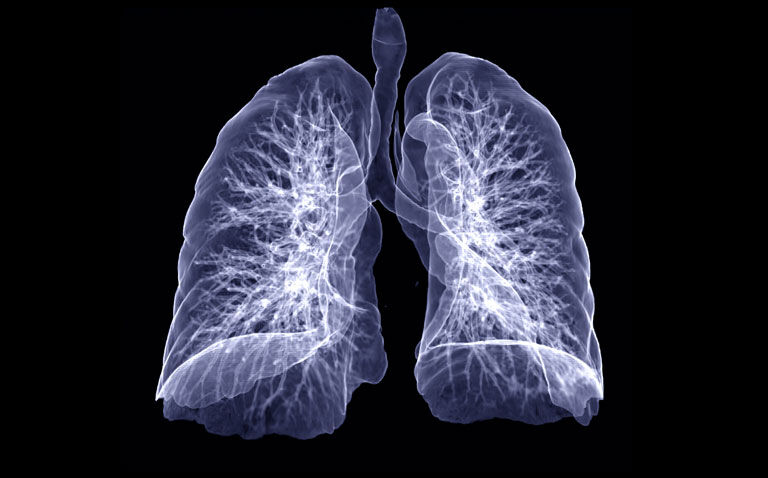CT chest scans in patients with breakthrough COVID-19 infections show lower levels of pneumonia compared to scans of unvaccinated patients
A significantly higher proportion of CT chest scans in fully vaccinated patients who experience a breakthrough infection showed no signs of pneumonia during their stay in hospital, according to a study by Korean researchers.
COVID-19 vaccination across the globe has led to a protection against both symptomatic and asymptomatic COVID-19 as well as severe disease, hospitalisation and death. Although a CT chest scan has been described as an indispensable diagnostic tool in COVID-19, no studies have reported on using this imaging modality to examine the features associated with breakthrough infections that are generally less severe.
In the present study, the Korean team compared the imaging features of fully, partially and unvaccinated patients, who were hospitalised because of a COVID-19 infection. The team focused only on patients with a PCR-confirmed positive COVID-19 test result and who underwent at least one CT chest scan during their period of hospitalisation.
Partially vaccinated individuals were defined as those for which the infection occurred less than 14 days after their first COVID-19 vaccine. In contrast, fully vaccinated individuals were those who became infected 14 days after their second vaccine dose.
Using a retrospective design, the team collected demographic and co-morbidity data for all patients, as well as whether an individual required supplemental oxygen, was admitted to an intensive care unit (ICU) admission or died in hospital. The CT chest scans were obtained either upon admission or within a week of symptom onset and follow-up chest radiographs were obtained every two to three days until discharge.
The extent of pneumonia was scored from 0 to 2 (i.e., 0 = no evidence, 1 = 1 – 25% involvement and 2 = > 25% involvement) and the patterns of pneumonia were categorised as either typical, indeterminate, atypical or negative. The researchers used logistic regression to evaluate any associations between clinical factors such as vaccination status and clinical outcomes.
CT chest scan and clinical outcomes
A total of 761 patients with a mean age of 47 years (51% women) were included, of whom, 77% were unvaccinated, 17% partially vaccinated and 6% fully vaccinated. Relevant co-morbidities for the whole cohort included hypertension (22%), diabetes (13%) and cardiovascular disease (5%).
All 761 patients underwent a CT chest scan at admission and 86% had at least one follow-up scan. During the initial scan, 63% of unvaccinated individuals had negative chest radiographs (i.e., a score of 0) whereas 75% of fully vaccinated patients were negative.
In 412 patients who underwent a CT chest scan during their stay in hospital, there was no evidence of pneumonia in 59% of those who were fully vaccinated compared to 22% of those who were unvaccinated (p < 0.01).
Fully vaccinated patients were also significantly less likely to need supplemental oxygen (Odds ratio, OR = 0.24, 95% CI 0.09 – 0.64, p = 0.05) compared to unvaccinated patients and to be admitted to an ICU (OR = 0.08, 95% CI 0.09 – 0.78, p = 0.02).
The authors concluded that fully vaccinated individuals who experienced a breakthrough COVID-19 infection had a higher proportion of CT chest scans without signs of pneumonia compared with unvaccinated individuals.
Citation
Lee JE et al. Imaging and Clinical Features of COVID-19 Breakthrough Infections: A Multicenter Study Radiology 2022










